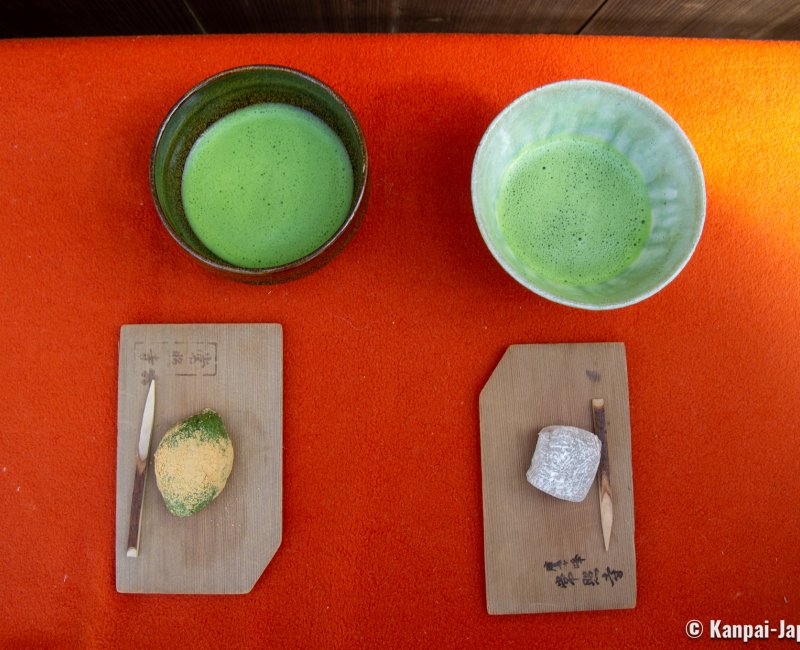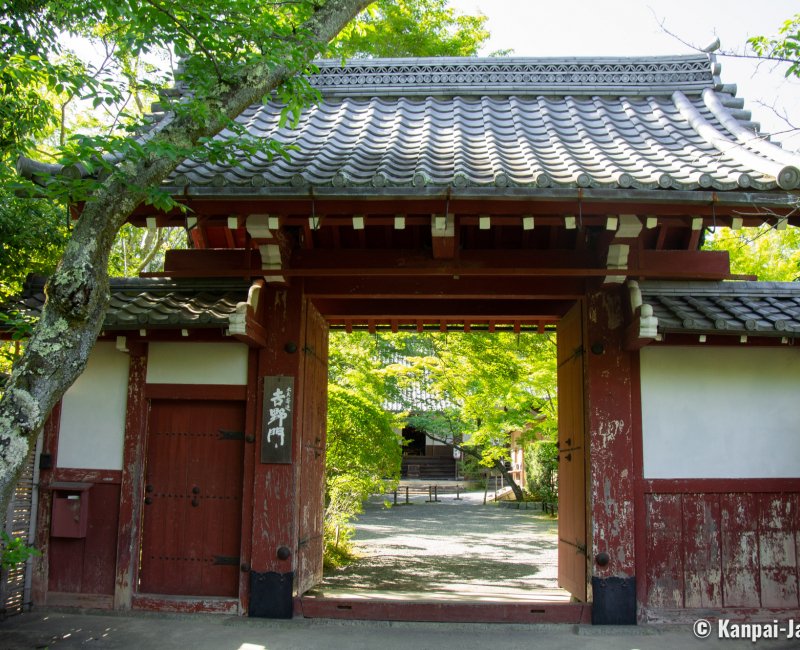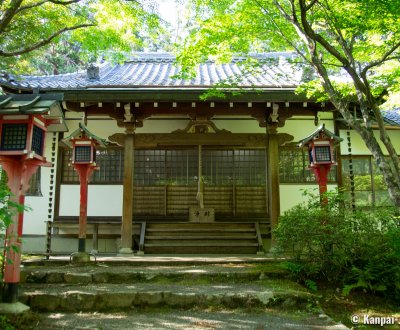Josho-ji
The Discreet Nichiren Temple in the North of Kyoto
Josho-ji is a Buddhist temple of the Nichiren school, located in Takagamine district in the north-west of Kyoto. While it does not have specific touristic features, the commemoration of the life of high ranking courtesan Yoshino Tayu at the end of April is its annual highlight.
Neighboring the very beautiful Genko-an, Josho-ji temple is spreading in a forest of a lush vegetation in summer and maple trees turning into a beautiful red in autumn 🍁. Quite extensive, the temple’s grounds however offers an unruly appearance due to the fact that there is no traditional garden. The nature is indeed left growing as it pleases and it perfectly suits the somewhat forsaken atmosphere of the place.

Tea break in a former monastic school
The origins of Josho-ji date back to 1616 and to Japanese calligrapher Hon'ami Koetsu (1558 – 1637). On these lands of Takagamine district in the north-west of Kyoto, bequeathed by shogun Tokugawa Ieyasu, the literary figure established an artistic community called the "Koetsu village". Later, the site was taken up by the Buddhist sect Nichiren and the Takagamine Danrin School, dedicated to the training of their monk apprentices, was founded. Up to 200 students would attend the school before the temple lose in popularity and part of its buildings fall in derelict.
After the entrance, Josho-ji’s main hall quickly appears, surrounded by a few other wooden buildings. Under a short passageway, a few benches covered with red fabric are arranged for visitors. We recommend to make the most of the temple’s quietness and its low attendance by sitting and have a matcha tea served with a seasonal wagashi Japanese confectionery.
Behind the buildings, the walk is less interesting, despite two old traditional tea houses, including Iho-an (遺芳庵) and its round window, that are unfortunately frequently closed to the public. Lastly, a stairway laden with branches goes down to a pond overlooked by an unrewarding statue of Hakuba Kannon.

In memory of courtesan Yoshino Tayu
Another important part of the temple’s history is still visible today : Josho-ji is linked to one of the most renowned courtesans of her times: Yoshino Tayu, who lived during the first half of the 17th century. She was a follower of the Nichiren sect and offered the temple the vermilion gate at the entrance, that was given her name: Yoshino-mon. Her grave is also in the spiritual grounds.
The Tayu, who were a kind of high ranking Geisha, have almost disappeared today. The last remnants of these lineage of entertainers and cultured women are gathered in Shimabara district, in the west to the JR station and are only performing for a handful of regulars.
Every year on the third Sunday of April, Josho-ji temple organizes a great spring festival called Yoshino Tayu Hana-kuyo (吉野太夫花供養) under the blooming cherry trees 🌸 and in honor of the famous courtesan. On this occasion, that attracts many spectators, the Tayus of Shimabara parade, dance and play music before performing a tea ceremony in the main pavilion.
The visit of Josho-ji may not impress those who are not aware of the temple’s history. As a matter of fact, the few rather classical buildings and the bucolic garden cannot compare to the multitude of spiritual registered sites in Kyoto. However, it may please people looking for simplicity and quietness for a visit at the temple, complemented by a contemplative break enjoying a matcha tea.

